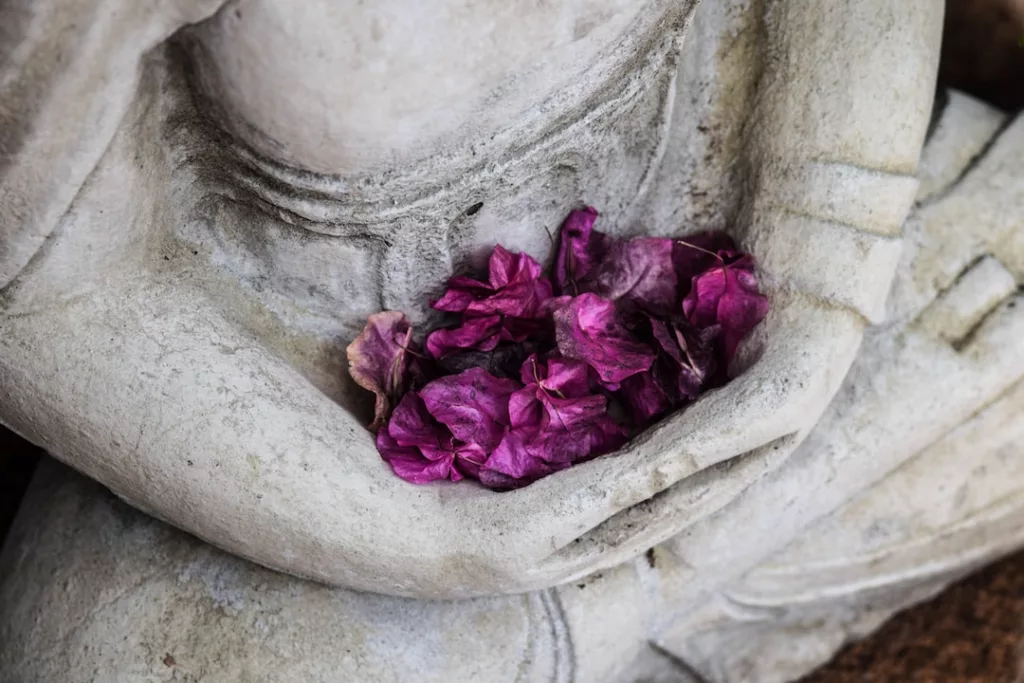Unlocking the Power of Transcendental Meditation Mantras: A Beginner’s Guide

Introduction
In this modern era of ceaseless momentum, discovering pockets of serenity and tranquility has become an arduous quest. The constant demands of work, family, and social obligations can leave us feeling overwhelmed and stressed. That’s where Transcendental Meditation (TM) comes in. TM is a popular form of meditation that has gained widespread recognition for its ability to promote relaxation, reduce stress, and improve overall well-being. In this article, we will explore the techniques and benefits of TM, as well as provide tips for incorporating it into your daily routine.
What is Transcendental Meditation and How Does it Work?
Transcendental Meditation, or TM, is a technique that was developed by Maharishi Mahesh Yogi in the 1950s. It is a simple, natural, and effortless form of meditation that involves the use of a mantra, or a specific sound or phrase, to quiet the mind and achieve a state of transcendence. Unlike other forms of meditation that may require concentration or focus, TM allows the mind to effortlessly settle into a state of deep relaxation and inner peace.
Scientific research has shown that TM has a wide range of benefits for both the mind and body. Studies have found that regular practice of TM can reduce stress and anxiety, improve focus and concentration, increase creativity and productivity, and promote overall well-being. TM has also been shown to have positive effects on physical health, such as reducing blood pressure, improving cardiovascular health, and boosting the immune system.
The Importance of Mantras in Transcendental Meditation
One of the key elements of TM is the use of mantras. Mantras are specific sounds or phrases that are repeated silently in the mind during meditation. The repetition of the mantra helps to quiet the mind and allow the meditator to transcend thoughts and enter a state of deep relaxation.
The use of mantras in TM is based on the belief that each individual has a unique vibrational frequency, and that by repeating a specific sound or phrase, one can align themselves with their own inner essence. The mantra acts as a tool to help the meditator go beyond the surface level of the mind and access deeper levels of consciousness.
There are many different mantras that can be used in TM, but they are typically chosen based on their vibrational qualities and their ability to resonate with the individual. Some common mantras used in TM include “Om,” “So Hum,” and “Aham Prema,” which means “I am love.” These mantras are believed to have a calming and centering effect on the mind, helping the meditator to achieve a state of deep relaxation and inner peace.
Choosing the Right Mantra for Your Practice
Choosing the right mantra for your TM practice is an important step in maximizing its effectiveness. It is recommended to work with a certified TM teacher who can guide you in selecting a mantra that resonates with you. The teacher will take into account your personal preferences and needs, as well as the specific qualities of the mantra, to ensure that it is a good fit for you.
When choosing a mantra, it is important to select one that feels comfortable and natural to you. The mantra should be easy to remember and pronounce, and should have a positive and uplifting quality. It should also be a sound or phrase that you can easily repeat in your mind without effort or strain.
Once you have chosen a mantra, it is important to personalize it for maximum effectiveness. This can be done by silently repeating the mantra in your mind during meditation, allowing it to become a part of your inner experience. You can also experiment with different ways of saying the mantra, such as varying the speed or tone of your mental repetition, to find what feels most natural and effective for you.
How to Prepare for Your Transcendental Meditation Session
Creating a peaceful and conducive environment for meditation is essential for a successful TM practice. Find a quiet and comfortable space where you can sit undisturbed for the duration of your meditation session. It can be helpful to dim the lights or light a candle to create a calming atmosphere.
Before beginning your TM session, take a few moments to clear your mind and let go of any thoughts or distractions. You can do this by taking a few deep breaths and focusing on your breath, or by practicing a short mindfulness exercise. This will help to prepare your mind for the deep relaxation and inner peace that TM can bring.
Consistency is key in TM, so it is important to establish a regular meditation routine. Set aside a specific time each day for your TM practice, and try to stick to it as much as possible. This will help to create a habit and make TM a natural part of your daily routine.
Finding a Comfortable Meditation Posture
Finding a comfortable meditation posture is essential for a successful TM practice. There are several different meditation postures that you can choose from, depending on your personal preference and physical abilities.
The most common meditation posture is the cross-legged position, also known as the lotus or half-lotus position. In this position, you sit on the floor with your legs crossed and your spine straight. This posture helps to promote stability and grounding during meditation.
If sitting on the floor is uncomfortable for you, you can also meditate in a chair. Choose a chair that allows you to sit with your feet flat on the ground and your spine straight. Place a cushion or folded blanket behind your lower back for added support.
Regardless of the posture you choose, it is important to find a position that allows you to be both comfortable and alert. Avoid slouching or leaning back, as this can lead to drowsiness or lack of focus. Instead, sit with your spine straight and your shoulders relaxed, allowing your breath to flow freely.
The Role of Breathing in Transcendental Meditation
Breathing techniques play an important role in TM. Deep, slow, and rhythmic breathing helps to relax the body and calm the mind, making it easier to enter a state of deep relaxation and inner peace.
During TM, it is recommended to breathe through the nose, as this helps to activate the parasympathetic nervous system and promote relaxation. Take slow, deep breaths, allowing your belly to rise and fall with each inhalation and exhalation. Focus on the sensation of the breath as it enters and leaves your body, using it as an anchor to keep your mind present and focused.
Proper breathing can also help to release tension and stress from the body. As you breathe deeply and consciously, imagine that you are inhaling positive energy and exhaling any negative or stagnant energy. This can help to create a sense of balance and harmony within the body and mind.
Tips for Staying Focused During Your Meditation
Staying focused during meditation can be a challenge, especially when the mind is accustomed to constant stimulation and distraction. However, with practice and patience, it is possible to cultivate a sense of presence and focus during your TM sessions.
One common distraction during meditation is the influx of thoughts and emotions. It is important to remember that thoughts and emotions are a natural part of the meditation process, and that they should be accepted and observed without judgment. Instead of trying to push away or suppress your thoughts, simply acknowledge them and let them go, returning your attention to your mantra or breath.
Another common distraction during meditation is physical discomfort. If you experience discomfort or pain during your TM session, try adjusting your posture or shifting your position slightly. It can also be helpful to bring your attention to the sensation of discomfort and observe it without judgment. Often, simply acknowledging and accepting the discomfort can help to lessen its intensity.
Maintaining a sense of curiosity and openness during your TM practice can also help to stay focused. Instead of approaching meditation with a goal or expectation, approach it with a sense of curiosity and exploration. Allow yourself to be fully present in the moment, observing whatever arises without attachment or judgment.
How Long Should You Meditate for?
The recommended length of TM sessions varies depending on your personal preference and schedule. It is generally recommended to start with shorter sessions, such as 10-15 minutes, and gradually increase the duration as you become more comfortable and experienced.
Consistency is more important than duration when it comes to TM. It is better to meditate for a shorter period of time every day than to meditate for a longer period of time sporadically. Aim to meditate at least once a day, ideally in the morning or evening when the mind is naturally more calm and receptive.
If you find it difficult to find time for a longer meditation session, you can also incorporate shorter meditation breaks throughout the day. Take a few moments to close your eyes, take a few deep breaths, and repeat your mantra silently in your mind. Even just a few minutes of meditation can help to reset and recharge your mind and body.
The Benefits of Transcendental Meditation for Your Mind and Body
Scientific research has shown that TM has a wide range of benefits for both the mind and body. Regular practice of TM has been found to reduce stress and anxiety, improve focus and concentration, increase creativity and productivity, and promote overall well-being.
One of the key benefits of TM is its ability to reduce stress and promote relaxation. During TM, the body enters a state of deep relaxation, allowing it to release tension and stress. This can have a profound impact on both mental and physical health, as chronic stress has been linked to a wide range of health problems, including heart disease, high blood pressure, and weakened immune function.
TM has also been found to improve focus and concentration. By quieting the mind and allowing it to settle into a state of deep relaxation, TM helps to clear away mental clutter and improve mental clarity. This can enhance productivity and creativity, as well as improve memory and cognitive function.
In addition to its mental benefits, TM has also been shown to have positive effects on physical health. Studies have found that regular practice of TM can reduce blood pressure, improve cardiovascular health, and boost the immune system. TM has also been found to reduce the risk of heart disease, stroke, and other chronic health conditions.
Incorporating Transcendental Meditation into Your Daily Routine
Incorporating TM into your daily routine can be a powerful way to prioritize self-care and mindfulness in your life. Here are some tips for making TM a regular part of your daily routine:
1. Set aside a specific time each day for your TM practice. Choose a time when you are least likely to be interrupted or distracted, such as early in the morning or before bed.
2. Create a dedicated space for your TM practice. Find a quiet and comfortable space where you can sit undisturbed for the duration of your meditation session. Decorate the space with items that bring you joy and peace, such as candles, crystals, or plants.
3. Start with shorter meditation sessions and gradually increase the duration as you become more comfortable and experienced. Consistency is more important than duration, so aim to meditate for at least a few minutes every day.
4. Use reminders to help you stay consistent with your TM practice. Set an alarm or reminder on your phone, or place a sticky note on your bathroom mirror or computer screen to remind you to meditate.
5. Be flexible and adaptable with your TM practice. If you are unable to meditate at your usual time or in your usual space, find alternative ways to incorporate meditation into your day. You can meditate during your lunch break, on your commute, or even while doing household chores.
6. Be patient and compassionate with yourself. Meditation is a practice, and it takes time and effort to develop a consistent routine. If you miss a day or have a difficult meditation session, don’t beat yourself up. Simply acknowledge it and move on, knowing that every meditation session is an opportunity for growth and self-discovery.
Conclusion
Transcendental Meditation is a powerful tool for promoting relaxation, reducing stress, and improving overall well-being. By incorporating TM into your daily routine, you can experience the many benefits that it has to offer. Remember to seek guidance from a certified TM teacher to ensure that you are practicing the technique correctly and to maximize its effectiveness. With practice and patience, you can cultivate a sense of peace and tranquility in your life, even in the midst of a fast-paced world.
If you’re interested in exploring different meditation techniques, you may want to check out our article on transcendental meditation mantras. Transcendental meditation is a popular form of meditation that uses specific mantras to help practitioners achieve a deep state of relaxation and inner peace. In this article, we delve into the benefits of using mantras in meditation and provide guidance on how to choose the right mantra for your practice. Whether you’re a beginner or an experienced meditator, incorporating mantras into your meditation routine can enhance your overall experience and bring about profound mental and emotional well-being. To learn more about transcendental meditation , click here.






